WELLINGTON, New Zealand (AP) — A ban on New Zealanders wearing or displaying symbols of gang affiliation in public took effect on Thursday, with police officers making their first arrest for a breach of the law three minutes later.
The man was driving with gang insignia displayed on the dashboard of his car, Police Commissioner Richard Chambers told 1News.
The prohibition on displaying gang insignia anywhere outside private homes, including on clothing or in vehicles, is among a suite of new measures intended to bolster police powers to disrupt the groups. Wearing or displaying the insignia of 35 listed gangs will now prompt a fine of up to 5,000 New Zealand dollars ($2,940) or up to six months in jail.
New Zealand’s center-right government, which pledged ahead of last October’s election to tackle gang crime, says the measures will reduce the membership of groups responsible for violence and drug offenses. But detractors say the law breaches civil liberties and could drive gang activities underground.
"Gangs aren’t community groups. They’re not a Rotary club," Prime Minister Christopher Luxon wrote on social media Thursday. “They thrive on destroying the lives of other New Zealanders, whether that’s by peddling drugs or through brutal acts of violence that leave communities in fear.”
Under the new law, officers can also disperse public gatherings of three or more members, bar some gang affiliates from associating with each other, and enter homes of those who keep breaking the law to search for banned items. Gang membership will now be considered by the courts when sentencing offenders.
Police Minister Mark Mitchell told reporters Thursday that two people were arrested hours after the law took effect for wearing gang “patches,” which are large insignia often worn by gang members on the backs of leather jackets or vests. The government says the patches are intimidating because members are required to earn them through violent acts.
The measures shift New Zealand's response to gangs closer to that of neighboring Australia, which also uses a law to suppress the public visibility of gangs, and away from jurisdictions like the U.S. and Britain, which use criminal law to respond to specific activities carried out by organized crime groups, according to a report published by Treasury officials in February.
Facial tattoos that display gang insignia are exempt from the ban, as is the wearing of gang colors. The government was criticized by some for not including white supremacist groups in its list of 35 organizations targeted by the new law. That means displaying swastikas and making Nazi salutes remains legal in New Zealand -– unlike in Australia, which banned both in a law that took effect January.
There are nearly 9,400 people on a New Zealand police list of known gang members. New Zealand’s population is 5 million.
Successive governments have vowed to tackle criminal gangs, which often are linked to poverty and other deprivation. The previous center-left government was decried by Luxon’s administration for working with gangs on social initiatives, including COVID-19 vaccination efforts, while the current government has been denounced for advancing policies that are likely to ensnare some of New Zealand’s most marginalized groups, including Indigenous Māori.
Official reports say three-quarters of those on the national gang list are Māori, who make up less than 20% of New Zealanders, and that 80% to 90% of those in two of the most notorious gangs are former wards of the state.
Luxon made a formal apology this month for the widespread abuse of children and vulnerable adults in state care over the past seven decades.

Members of patched gangs gather before marching to parliament during a protest against a proposed law that would redefine the country's founding agreement between Indigenous Māori and the British Crown, in Wellington, New Zealand, Tuesday, Nov. 19, 2024. (AP Photo/Mark Tantrum)
TOKYO (AP) — Asian shares were mostly lower on Thursday after a mixed close on Wall Street, with regional markets shrugging off a strong profit report from Nvidia that was released after U.S. markets closed.
Nvidia again topped analysts' expectations, but technology shares in Tokyo declined due to the company's lower-than-hoped for profit forecasts. In after-hours trading, Nvidia’s shares lost 2.5%.
Japan's benchmark Nikkei 225 shed 0.9% in morning trading to 38,001.80, as shares in semiconductor equipment maker Advantest Corp. dropped 2.7%. Chip maker Tokyo Electron shed 1.5%.
Australia's S&P/ASX 200 slipped nearly 0.2% to 8,313.50. South Korea's Kospi rose nearly 0.5% to 2,493.91. Hong Kong's Hang Seng dipped 0.2% to 19,662.49, while the Shanghai Composite lost 0.2% to 3,361.58.
Stephen Innes, managing partner at SPI Asset Management, noted the market reaction to Nvidia's results was muted, partly because of the positioning that happened before the release. Its long-term prospects remain complex, he added.
“The bigger question remains: where exactly is the bar for Nvidia now?” Innes said in a commentary. “This push to integrate AI into every corner of the corporate world risks backfiring when the technology is forced into roles it isn’t fully equipped to handle.”
Trading in the options market suggested Nvidia’s profit report was the most anticipated event left in 2024, more than even the Federal Reserve’s upcoming meeting on interest rates, according to Barclays Capital.
Nvidia has grown into a nearly $3.6 trillion behemoth because of nearly insatiable demand for its chips used in artificial-intelligence technology.
It’s grown so fast, with its stock nearly tripling for the year so far, that pressure has grown for it to show it can keep leapfrogging past analysts’ already high expectations.
On Wall Street, the S&P 500 finished the day virtually unchanged, at 5,917.11 after coming back from a loss of 1%. The Dow Jones Industrial Average eked out a 0.3% gain, to 43,408.47, and the Nasdaq composite slipped 0.1% to 18,966.14.
U.S. retailer Target’s 21.4% tumble followed a report showing weaker profit and revenue for the latest quarter than analysts expected. The retailer also gave a forecast for profit in the upcoming holiday season that was below analysts’ estimates.
Rival Walmart reported another quarter of stellar sales Tuesday and released optimistic projections for the holiday season.
Hints about how U.S. consumers are doing are under particular scrutiny, since their spending will help determine if the U.S. economy will continue growing and avoid a recession. Shoppers are contending with high prices across the economy and still-high interest rates.
“I find the Target and Walmart earnings very interesting because we typically see a waterfall type effect when the economy begins to struggle, with shoppers trading down from stores such as Target to Walmart,” said JJ Kinahan, CEO of IG North America.
Comcast rose 1.6% after announcing the spinoff of USA, CNBC, MSNBC and other cable television networks into a standalone company that will have its own stock trading on the market.
All told, the S&P 500 inched up by 0.13, or less than 0.1%, to 5,917.11. The Dow Jones Industrial Average added 139.53 points to 43,408.47, and the Nasdaq composite slipped 21.32 to 18,966.14.
Financial markets are also still absorbing the impacts of Donald Trump’s victory in the presidential election, including expectations that Trump’s policies will drive faster U.S. economic growth and inflation.
Treasury yields held relatively steady in the bond market. The 10-year yield edged up to 4.41% from 4.40% late Tuesday. It has been generally rising from less than 3.70% in September.
In other dealings early Thursday, benchmark U.S. crude gained 17 cents to $68.92 a barrel. Brent crude, the international standard, added 18 cents to $72.99 a barrel.
In currency trading, the U.S. dollar fell to 155.05 Japanese yen from 155.31 yen. The euro cost $1.0551, down from $1.0546.
AP Business Writer Stan Choe contributed.
Yuri Kageyama is on Threads: https://www.threads.net/@yurikageyama
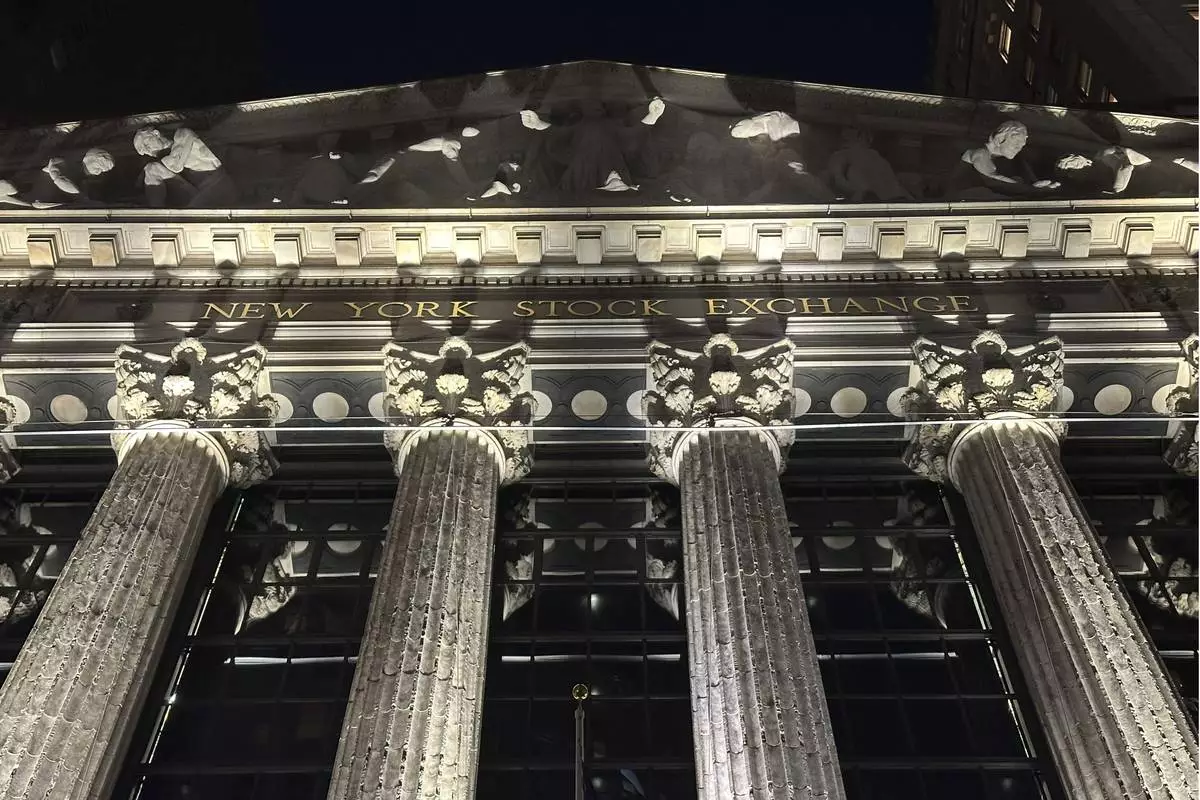
The facade of the New York Stock Exchange is illuminated on Tuesday, Nov. 19, 2024. (AP Photo/Peter Morgan)
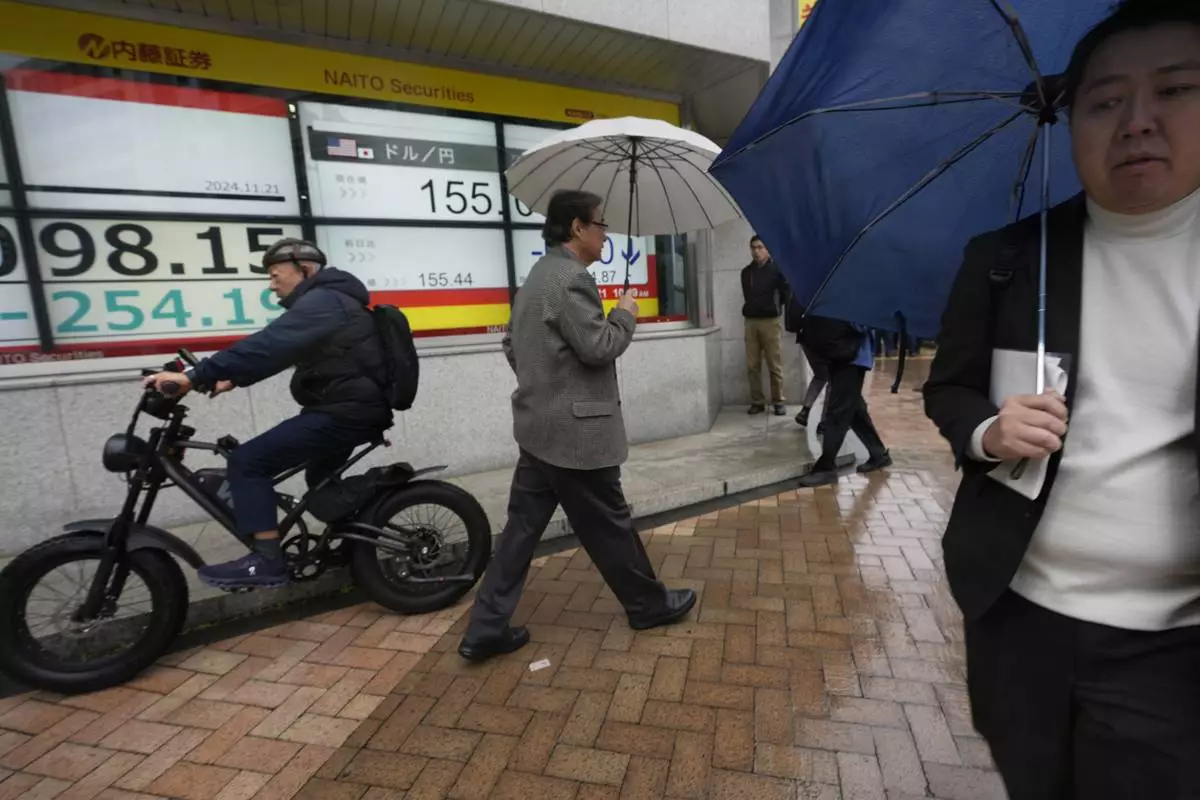
People walk by monitors showing Japan's Nikkei 225 index and Japan's foreign exchange rate against the U.S. dollar at a securities firm in Tokyo, Thursday, Nov. 21, 2024. (AP Photo/Hiro Komae)
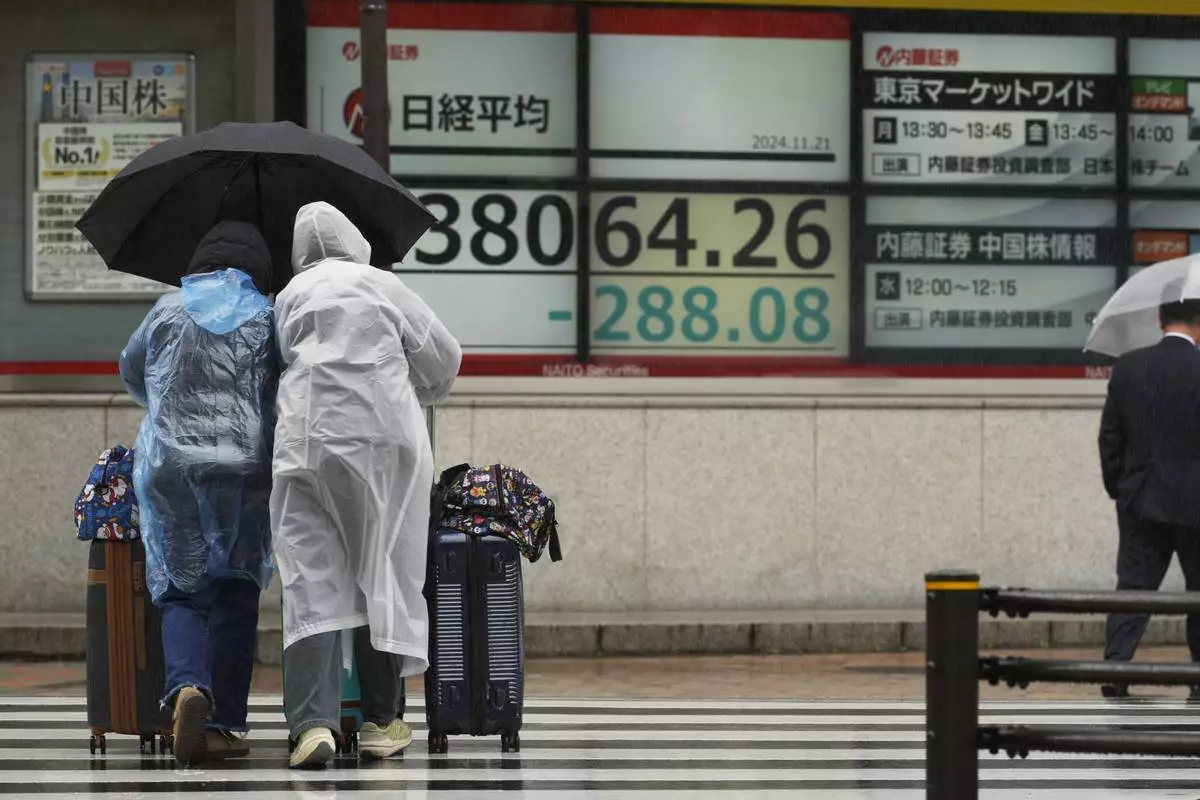
Travelers walk by monitors showing Japan's Nikkei 225 index at a securities firm in Tokyo, Thursday, Nov. 21, 2024. (AP Photo/Hiro Komae)

A woman covering herself from the rain walks by monitors showing Japan's Nikkei 225 index at a securities firm in Tokyo, Thursday, Nov. 21, 2024. (AP Photo/Hiro Komae)
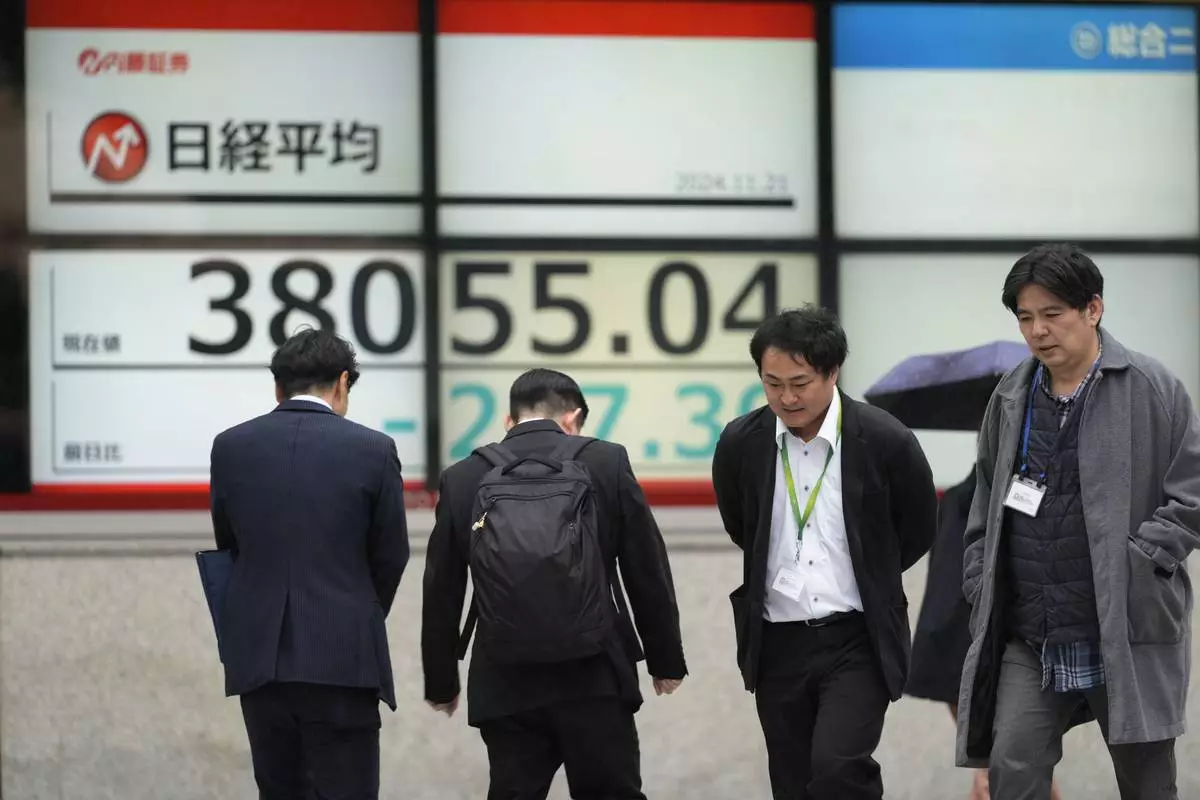
People walk by monitors showing Japan's Nikkei 225 index at a securities firm in Tokyo, Thursday, Nov. 21, 2024. (AP Photo/Hiro Komae)
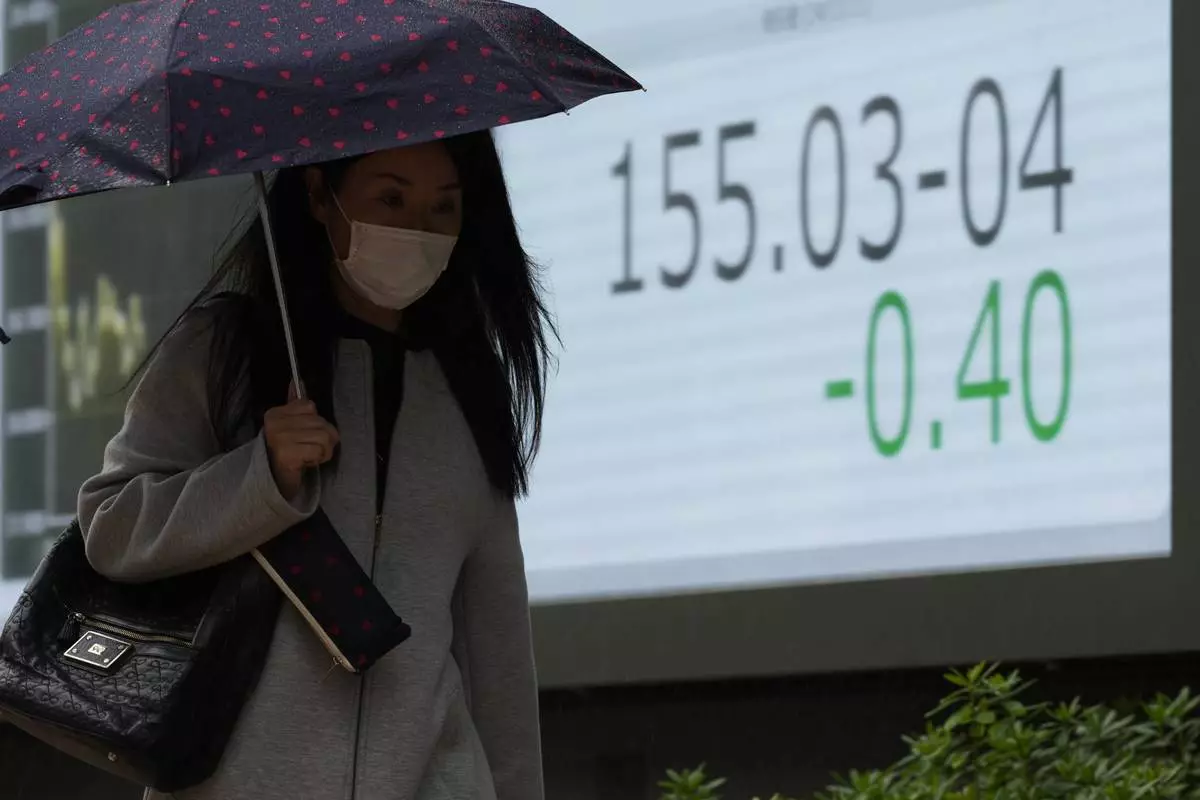
A woman walks by a monitor showing Japan's foreign exchange rate against the U.S. dollar at a securities firm in Tokyo, Thursday, Nov. 21, 2024. (AP Photo/Hiro Komae)
















